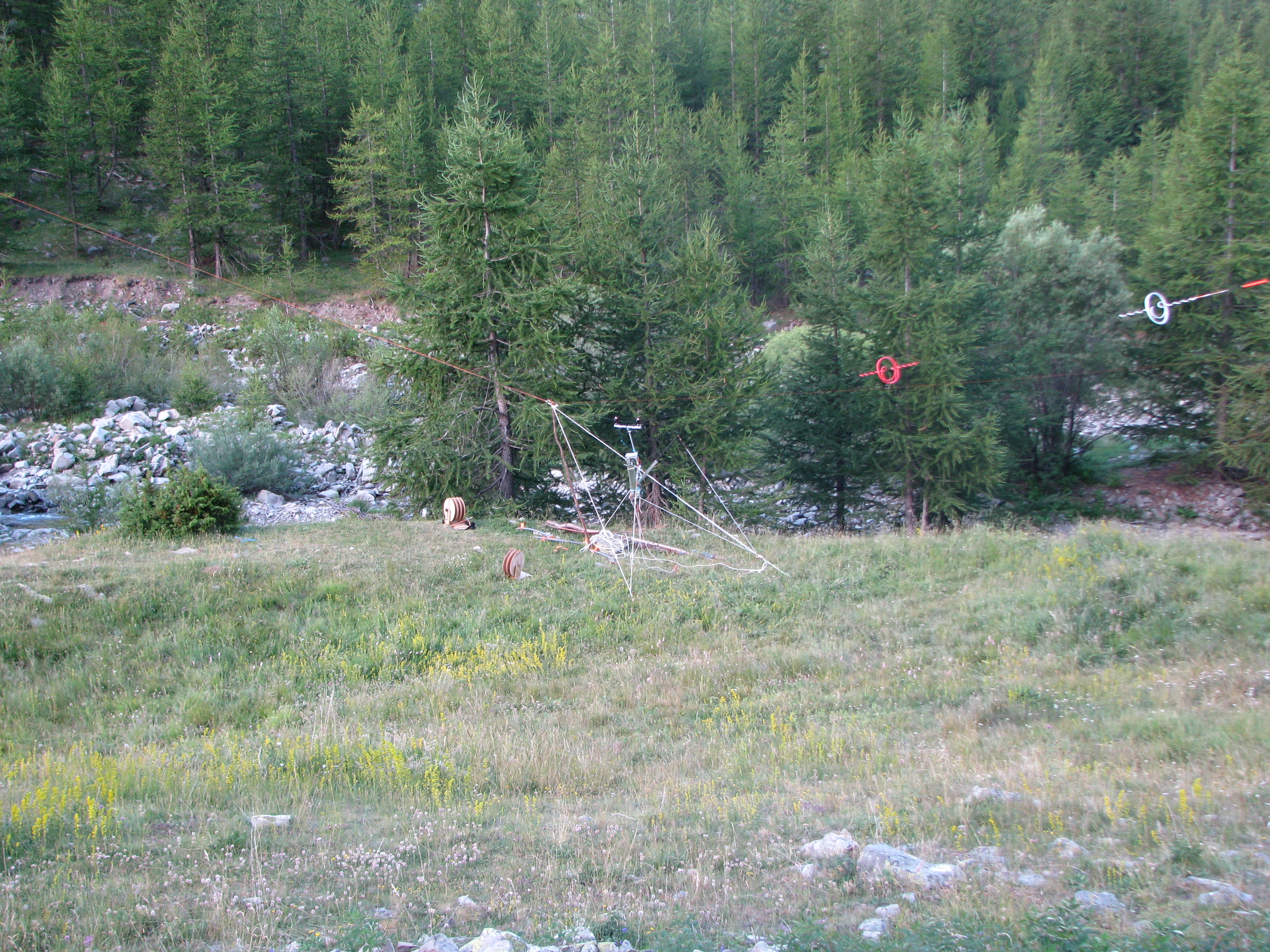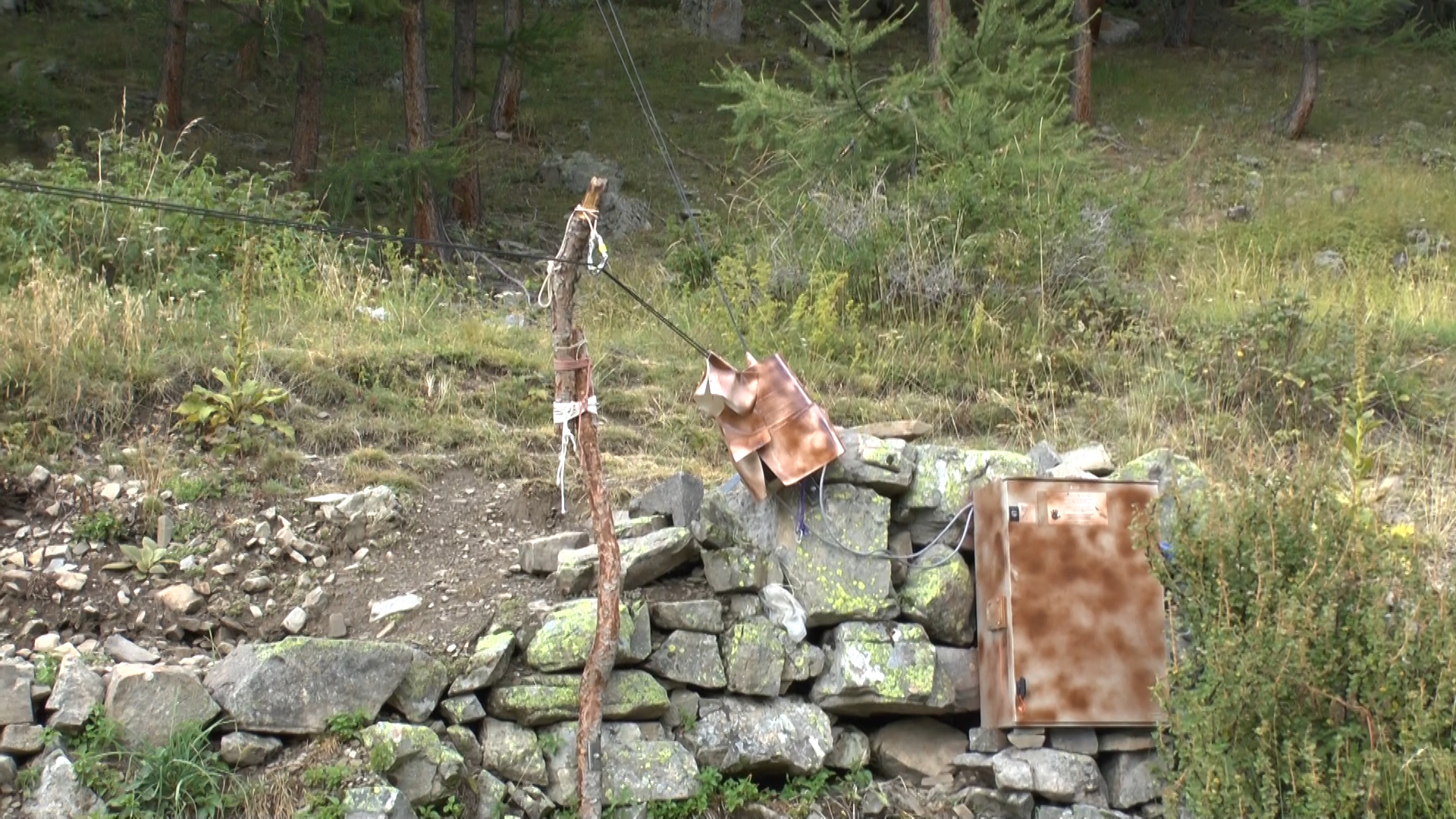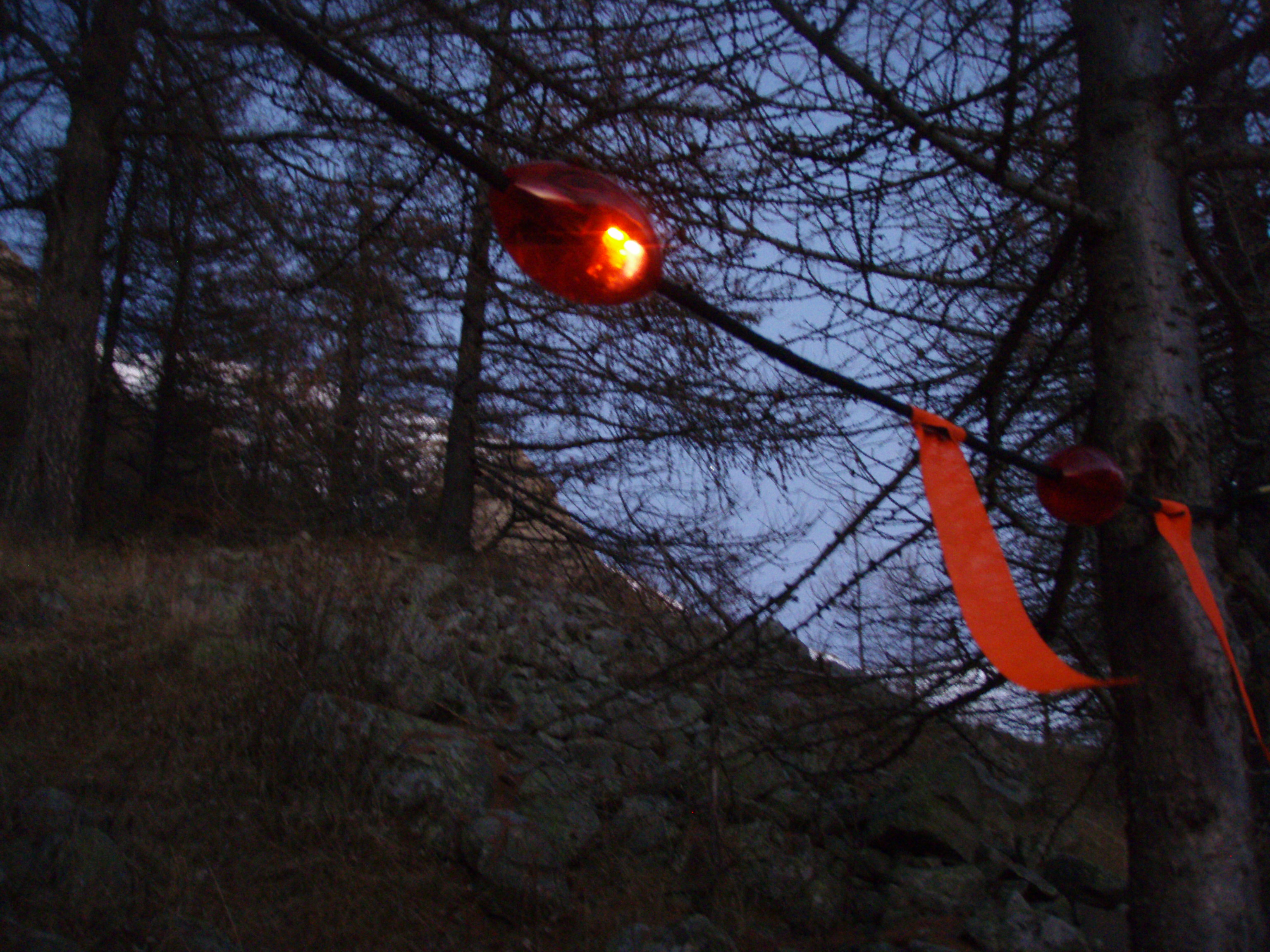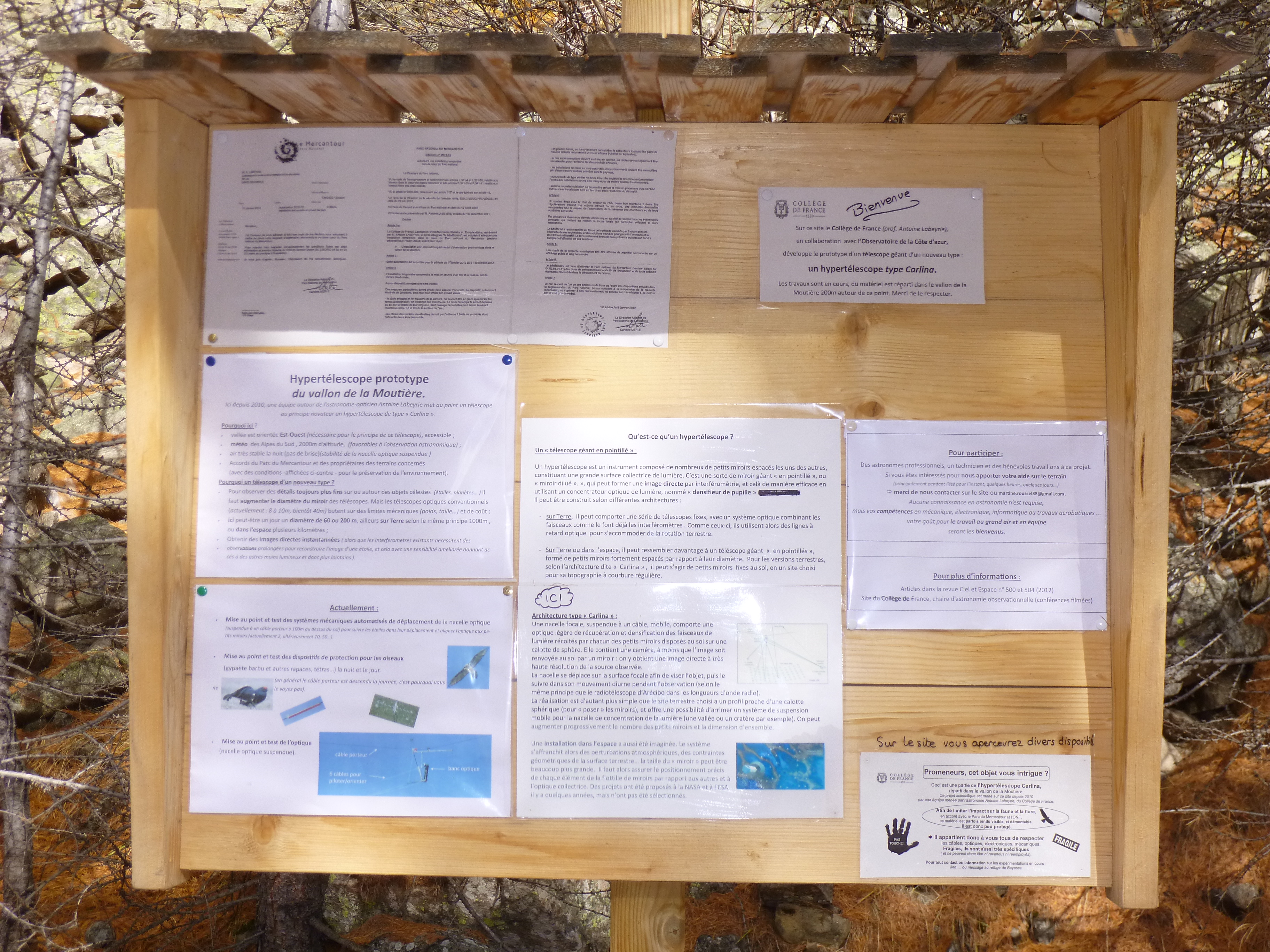Installation at the site
The installation site of the hypertelescope in Ubaye is subject, on its south flank to the regulation of Mercantour National Park and on its north flank to that of the National Forest Office.
The implementation of each element of the installation is designed to avoid altering the natural environment. Not only must everything be removable, but also after removing it there should be no trace at all. There is no excavation or use of concrete. Since the surface of the virtual mirror follows the natural curvature of the valley, the small mirrors rest over simple tripods anchored to the ground by removable pins. The tipi-tent laboratory/workshop is placed on a wooden platform that is completely removable.
The installation adapts to the characteristics of the place. On the south point, the gondola suspension cable is attached to a tree. When it is not stretched between the two flanks of the valley, it rests directly on the ground. At the shady side, it follows an avalanche couloir and then a thalweg. On the sunny side, it is placed on a landslide over a natural open space. A boulder marks the location of the base of the winch and the satellite antenna.
For security or efficiency reasons, some anchors have required the drilling of rocks. Eventually, the holes will be filled with a special resin. Five mini solar panel plants provide the power supply for the tipi-workshop, the hypertelescope motors and the control winches.
 |
 |
|
|
Information dashboard on site ©MR
|
"Zone of mirrors", view from the north ©JM | Electric cabinet and cables’ control motor on the east point ©MR |
Reuse of recycled materials
During the first implementation campaign, LISE team was still rather small and didn’t have fixed premises. With limited hardware resources on site at la Moutière or nearby, team members didn’t hesitate to use recycled materials found locally or brought by one of them after he had participated on a clean-up operation in the mountains.
This is why we find at the hypertelescope in Ubaye:
- Recovered profiles and bolts for basic installations
- Slings and other lifting accessories taken from the dismantling of a ski resort and used at the north anchors
- A winch support taken form the same ski resort
- A ski pole, a mowing tube and recovered military wire used in the gondola
- A piece of a military electric pylon for protecting the passage of the cable trough the forest path, when it is in ground position.
Protection measures
Avifauna
The gondola suspension cable and the six jumper cables for its manipulation are difficult to detect by birds and therefore they present a risk for the avifauna. Also, in conjunction with the Mercantour National Park rangers, a program for the observation and protection of avifauna has been implemented. Among the diurnal species identified on the site, the black grouse (Tetrao tetrix), the griffon vulture (Gylps fulvus), the golden eagle (Aquila chrysaetos), and the bearded vulture are listed on the Annex I of the Birds Directive of the European Union. The eagle-owl (Bubo bubo), nocturnal raptor also listed under the Annex I, hasn’t been observed yet.
Some specific bird protection measures have already been implemented:
- A new orange colored suspension cable
- Day marking consisting of colourful spirals arranged at regular intervals on the cables (similar to power lines and ski lifts markings).
Regarding nighttime markings, mini solar lamps, with twilight sensors, and photo-luminescent paintings and pellets are being tested. The advantage of photo-luminescent materials is that they make the cables visible both at day and night. When the suspension cable is in ground position it rests at ground level, except for the part above the torrent, which is covered with a foam mark-up (seen by the white-throated dipper (Cinclus cinclus) that uses it as a refuge). Composed of three distinct sections, the forthcoming cable will be completely dismantled whenever the team is absent from site.
A study of bird’s behaviour when they approach the cables, using a motion-detecting camera, is scheduled. Results will be communicated to Mercantour National Park, which may use the diurnal and nocturnal markings at some other sites, if found appropriate.
 |
 |
|
RTE coloured spirals for preventing collisions between birds and cable ©MR
|
Flashing lamp and photo-luminescent slings for preventing collisions between birds and cable ©JPR
|
Mammal fauna
Chamois, ibex, deer, stoats and marmots are commonly observed.
Although the Moutière valley is a well-known wolf passage, no visual contact with this canid has taken place. However, howls have been heard from the site and traces and droppings have been observed. Carcass of a devoured sheep was also found. Each of these observations has been the subject of a report sent to the Mercantour National Park.
Flora
No endemic species is present on the site. In order to avoid trampling lawns, moving from one site area to another is always done along established trails.



